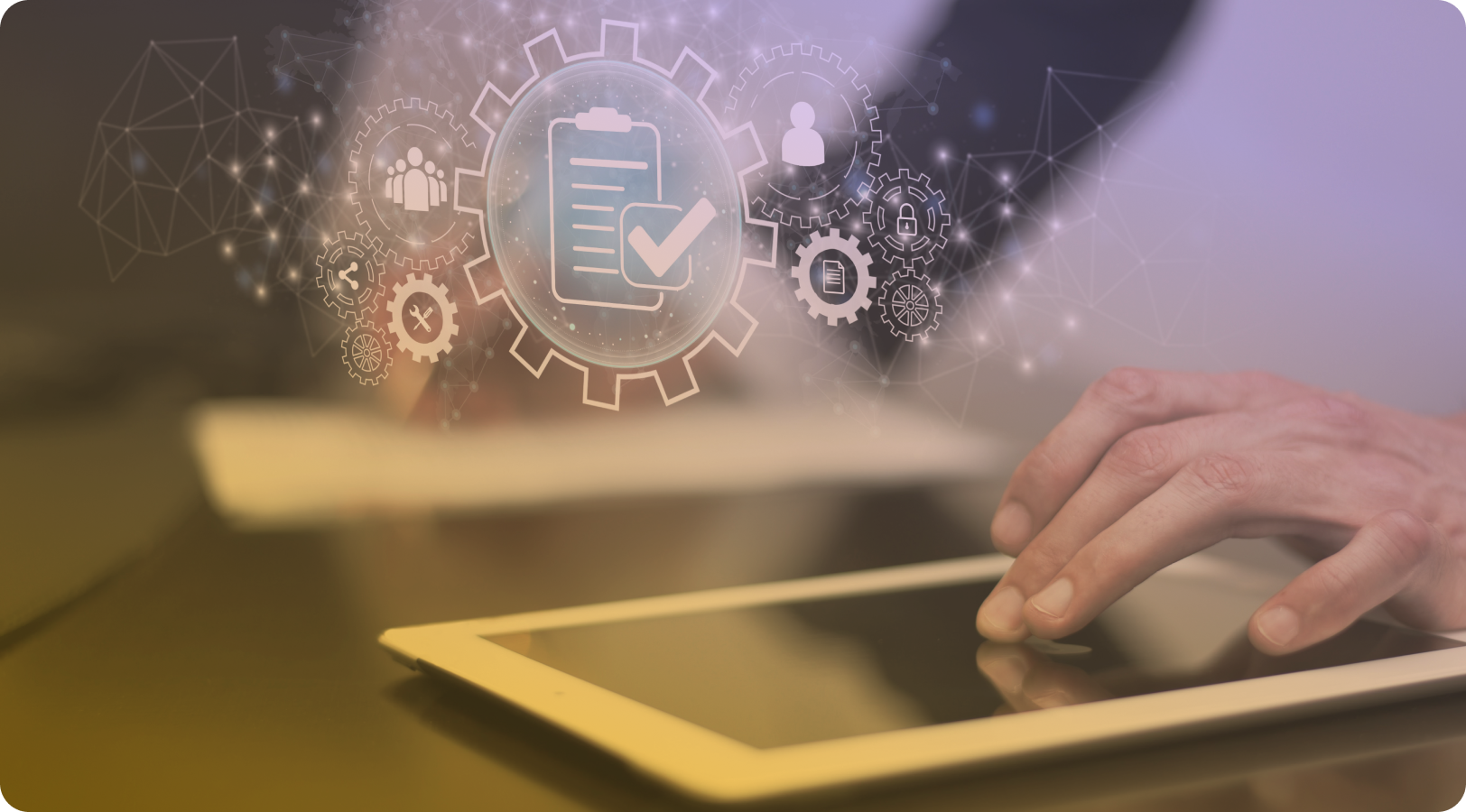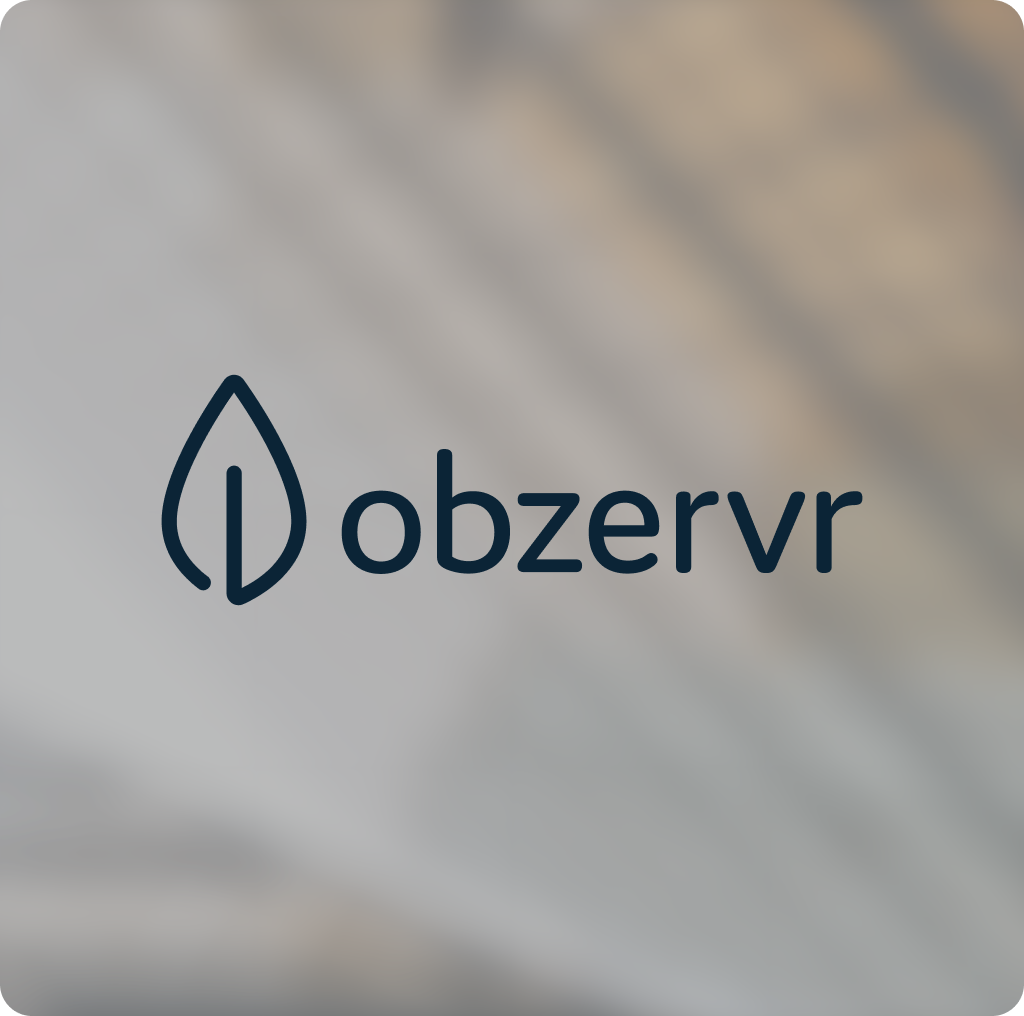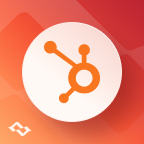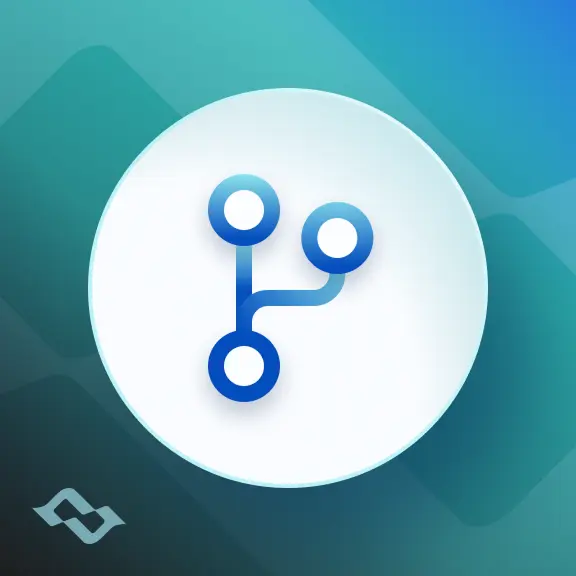Many organizations rely on a broad range of software components and systems, from cloud-based CRM and ERP solutions to legacy on-premises databases and custom-built applications. While each system serves a vital role, they often operate in silos, creating data fragmentation, inefficiencies, and bottlenecks in business workflows.
This is where Enterprise Application Integration (EAI) comes in - a strategic framework that allow different applications - often developed separately, running on different platforms and technology independent solutions - to communicate, exchange data, and work together, building an agile ecosystem.
In this guide, we’ll explore what EAI is, how it works, why it's essential for many companies, and what technologies stay behind such integration. We will also touch on some EAI use cases.
What Is Enterprise Application Integration?
Referring to the process and technologies that allow internal and external applications to communicate and integrate data - whether they are on premises systems or cloud - EAI allows consistent data flow between existing systems (such as ERP -Enterprise Resource Planning, CRM - Customer Relationship Management, HRM - Human Resource Management, finance software, and legacy systems). This way it's possible to achieve synchronized operations and conscious decision-making.
It's often used to break down siloed data, enforce business rules, automate workflows, and ensure real-time data exchange across platforms.
Why Is Enterprise Application Integration Important?
EAI is more than just a technical solution, it’s a strategic necessity for modern enterprises. But let’s take a closer look at why it's so important for business success.
Enhancing operational efficiency
By enabling different systems to work together, EAI eliminates redundant data entry, streamlines processes, and improves overall business efficiency.
Example: when customer data updates in a CRM, those updates can automatically reflect in the billing system, inventory system, and support portals.
Enabling seamless data flow
EAI ensures lineless data flow between systems, reducing delays and errors that often arise from manual or disconnected data sources. Enterprises can rely on up-to-date informations to support critical decision making.
Supporting business agility
As businesses adopt new tools, migrate to the cloud, or undergo digital transformation, EAI provides the flexibility needed to seamlessly integrate existing applications with new technologies. This supports faster innovation and time-to-market.
Delivering business value
With clean, consistent enterprise data and automated processes, Enterprise Application Integration provides measurable benefits in terms of customer experience, compliance, cost savings, and strategic insights. Ultimately, it aligns IT systems with evolving business strategy and business needs.
Common Integration Challenges Enterprises Face
Companies dealing with multiple applications often meet a variety of integration challenges before deciding for enterprise integration solution. It can be:
- Data silos created by departments using separate tools
- Incompatible operating systems and data formats
- Custom applications lacking API access or documentation
- Rigid point-to-point connections that don’t scale
- Poor data quality and synchronization issues
- Difficulties maintaining integrations as systems evolve
And we can say, that Enterprise Application Integration addresses these challenges - providing scalable, centralized methods for data exchange and system communication. Let's move on to how.
Enterprise Integration Patterns - Architectural Blueprints
To implement EAI effectively, organizations often rely on multiple integration approaches. There are some architectural models, describing how different systems can be connected and how data should flow between them.
- Point-to-Point integration
This method involves direct connections between systems. While simple to implement initially, it quickly becomes unmanageable as the number of integrated systems grows. Each new connection adds complexity and increases the risk of failure.
- Hub-and-Spoke integration
The hub and spoke model centralizes integration through a middleware framework or enterprise service bus (ESB). All systems (spokes) connect to a central hub, which handles message routing, transformation, and orchestration. Hub and spoke model is a more scalable approach than point-to-point.
- Message-Oriented Middleware (MOM)
With MOM, services communicate through messages placed in queues or topics. This pattern supports asynchronous communication and quick data exchange, making it ideal for decoupled systems.
- Service-Oriented Architecture (SOA)
SOA promotes integration via web services or APIs that expose discrete business functions. It enables reusability, loose coupling, and interoperability. It's foundational to many integration solutions, including cloud-native and hybrid approaches.
Key Components of Enterprise Integration Systems
EAI systems comprise several components that enable efficient and secure integration between applications. We can cite:
- Enterprise Service Bus (ESB)
An ESB acts as a central communication layer that manages service orchestration, data transformation, routing, and security. It supports the hub and spoke integration pattern and ensures that other systems can communicate regardless of technology.
- Application Programming Interfaces (APIs)
APIs provide the gateway for applications to expose or consume data. Effective API managing is essential for controlling access, securing endpoints, and monitoring performance in integrated systems.
- Middleware framework
Middleware connects software programs and facilitates data access, communication, and process integration. This includes application server middleware, message-oriented middleware, and protocol converters.
- Integration adapters
Adapters allow systems with different architectures to connect. They translate data formats, handle authentication, and connect to databases, messaging systems, or external cloud based services.
- Data mapping & transformation engines
These components ensure converting data into a common messaging format, ensuring accuracy in data integration and consistency across applications. They also apply business rules and standardizations to maintain data quality.
Real-World Use Cases of Enterprise Integrations
To understand the practical value of enterprise integrations, consider how it’s used across industries to streamline processes and drive growth. Below examples illustrate how businesses integrate various systems to enable smoother operations.
Integrating ERP and CRM systems
Many organizations use ERP systems for operations and a separate CRM platform for sales and support. Without data integration, these systems function as isolated data silos.
Using Enterprise Application Integration, these two platforms can exchange data automatically: sales reps accessing up-to-date inventory data from the ERP, or accounting teams receiving customer data in real time from the CRM. This improves operational efficiency, eliminates data errors, and supports a unified customer relationship management.
Legacy systems and modern cloud-based services
Enterprises often rely on legacy systems for core functions while introducing new cloud services for analytics, collaboration, or e-commerce. Enterprise Application Integration bridges the gap between these systems, allowing seamless data flow and data access across environments.
Such a hybrid integration helps businesses modernize gradually while preserving critical existing infrastructure.
Automating business processes
Complex business processes often span multiple departments and applications. For example, an order-to-cash workflow might involve the sales portal, inventory system, accounting software, and customer support platform.
With EAI, these steps can be orchestrated across systems via a service-oriented architecture or enterprise service bus. The result? Businesses can streamline business processes, reduce human error, and ensure timely fulfillment.
Benefits of Enterprise Application Integration
The strategic implementation of EAI offers a multitude of benefits - technical, operational, and business-related. Below advantages explain why is enterprise integration important in today’s business ecosystem.
- Unified business data
With EAI, businesses avoid fragmented data streams and gain a centralized, consistent view of their operations. This means better data quality, improved reporting accuracy, and cleaner analytics inputs.
- Reduced operational costs
By automating data flows and eliminating manual interventions, EAI significantly reduces labor costs and the risks associated with human errors or delayed updates.
- Accelerated decision-making
With real-time data available across systems, leaders and business users can make timely, informed decisions. Integration reduces the latency between action and insight.
- Improved agility and scalability
As new applications are added, whether through organic growth or mergers - an effective integration platform helps businesses scale without breaking existing connections. This supports continuous innovation and adaptability.
- Enhanced customer experience
EAI allows for more responsive, personalized interactions by ensuring that customer data is consistent and current across every touchpoint, from service desks to ecommerce portals.
How to Implement an Enterprise Integration Strategy
A successful EAI implementation requires thoughtful planning and execution. Here’s a structured approach:
Step 1: Assess business and technical requirements
Identify your working systems, data flows, pain points, and desired outcomes. Determine whether your priority is data, process integration, or both.
Step 2: Choose the right tools and architecture
Select the appropriate middleware framework, ESB, or iPaaS solution. Evaluate API management capabilities, scalability, support for standard class connections customized, and integration with data centers or cloud platforms.
Step 3: Design integration patterns
Map out your integration patterns, including routing, transformations, and error handling. Define how business rules will be applied and how systems will share data.
Step 4: Build and test
Use adapters, APIs, or web services to connect systems. Implement data mappings, workflows, and security protocols. Test thoroughly for performance, accuracy, and fault tolerance.
Step 5: Monitor, maintain, and optimize
Deploy monitoring tools to track data streams, latency, and failures. Implement alerts and reports to ensure proactive maintenance. Continually optimize based on evolving business needs.
Enterprise Integration and Data Security
Security is a major concern when multiple applications and disparate systems begin to share the data. Remember - EAI platforms must support:
- Data encryption in transit and at rest
- Authentication and authorization for APIs and services
- Audit logs for monitoring access and activity
- Data validation and quality checks to prevent propagation of bad data
These security layers ensure that critical data and business applications stay protected even in a highly interconnected environment.
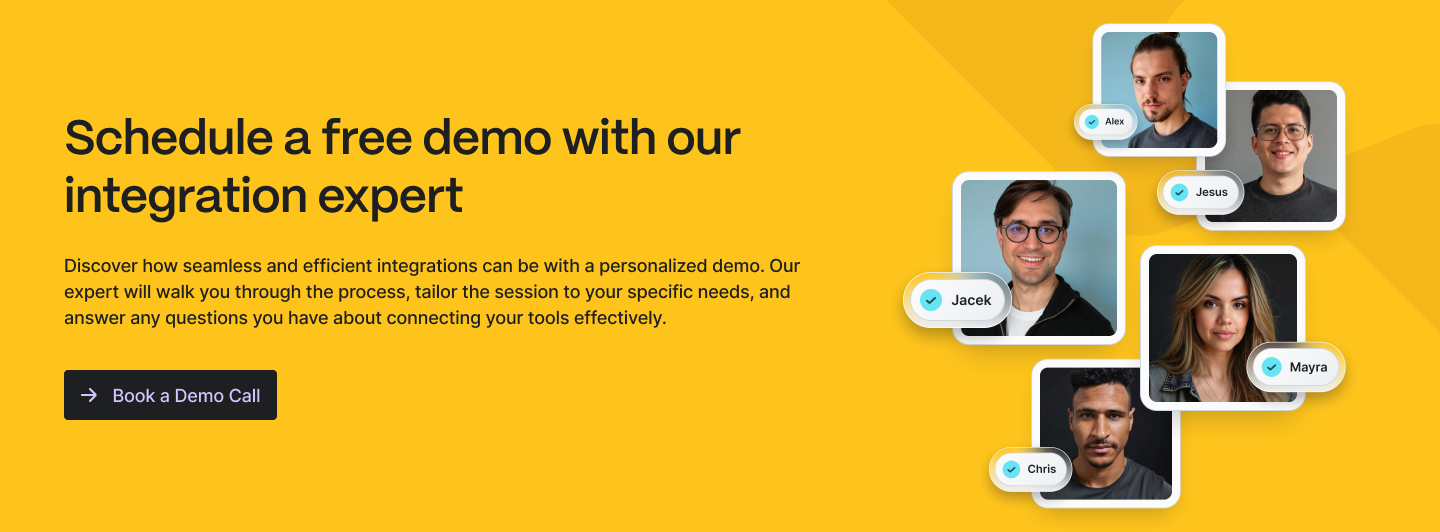
How Getint Supports Enterprise Integrations
While traditional enterprise application integration often revolves around complex middleware or ESB frameworks, Getint offers an agile, no-code alternative tailored for tool integration across project management, service management, and development ecosystems. Our platform enables users seamless synchronization between tools like Jira, Azure DevOps, ServiceNow, Zendesk, Salesforce, and more, allowing organizations to automate workflows and unify teams working across various systems.
Where Getint fits in the EAI landscape is through iPaaS (integration platform as a service) approach, bridging operational gaps between tools that were never natively designed to work together. Instead of building and maintaining rigid point-to-point integrations or relying on heavy middleware, Getint provides configurable, bi-directional synchronization that ensures data consistency across tools, teams, and departments.
Being an iPaaS platform, Getint support API managing, data encryption, and drag-and-drop workflows, making integration accessible to both IT teams and business users.
Key ways Getint enhances EAI strategies:
- Plug-and-play integrations: With pre-built connectors and flexible mapping configurations, Getint accelerates time-to-value for integration projects.
- Near real-time synchronization: Keeps issue tracking, tickets, status updates, comments, and attachments in sync between platforms, reducing context-switching and manual duplication.
- Support for hybrid environments: Whether you're working with on-premises tools or modern cloud-based systems, Getint ensures your data stays connected.
- Scalability without custom code: Getint empowers teams to integrate tools without the overhead of writing and maintaining custom connectors.
If you're looking for the solution that simplifies integrations while preserving enterprise-level control over workflows and data integrity, take a look at Getint.
Explore some case studies:
- Jira integration with ServiceNow
- Azure DevOps and Zendesk synchronization
- Salesforce integration with Jira or GitHub
Conclusion: Why Enterprise Application Integration Matters More Than Ever Now
In an era defined by digital transformation, the ability to connect multiple disparate systems is not a luxury - it’s a necessity. Enterprise application integration (EAI) enables organizations to leverage their full technology stack, eliminate inefficiencies, and make smarter, faster decisions based on connected business data.
Whether you're integrating legacy systems with cloud services, automating business processes, or enabling a real-time data pipeline between tools, EAI delivers the high value that modern enterprises demand.
By choosing the right integration platform, following best practices, and aligning EAI with broader business strategy, organizations can ensure they are not only keeping up but staying ahead.

